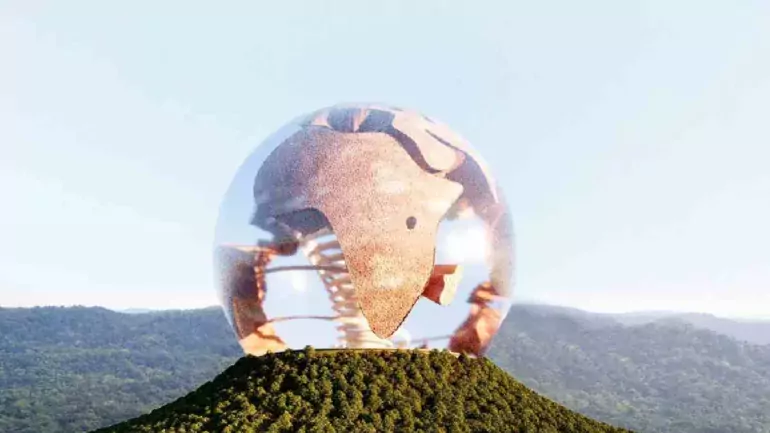ART & DESIGN
Design of the virtual museum of Stolen Cultural Artifacts by architect Francis Kéré. The groundbreaking project is a collaboration between UNESCO and Interpol.
The world’s first virtual museum dedicated to combating the illicit trade of cultural artifacts will be designed by architect Francis Kéré, the first African architect to receive the prestigious Pritzker Prize.
BY ARTCENTRON NEWS
In a groundbreaking collaboration, UNESCO, the United Nations’ cultural body, and INTERPOL are set to launch the world’s first virtual museum dedicated to combating the illicit trade of cultural artifacts. Scheduled for release in 2025, this visionary project has received substantial support from Saudi Arabia, with an initial funding commitment of $2.5 million. The primary objective is to raise awareness about the grave issue of stolen cultural property and facilitate the recovery of these invaluable objects.
UNESCO’s Director-General, Audrey Azoulay, eloquently emphasizes the profound significance of this initiative. She states, “Behind every stolen work or fragment lies a piece of history, identity, and humanity that has been wrenched from its custodians, rendered inaccessible to research, and now risks falling into oblivion.” This collaborative effort with INTERPOL aims to showcase the gravity of cultural theft and actively contribute to recovering stolen artifacts.
At the core of this ambitious project, INTERPOL’s extensive database transforms, turning over 52,000 stolen artifacts into immersive 3D representations. Renowned architect Francis Kéré, the first African architect to receive the prestigious Pritzker Prize, takes the helm in designing the virtual museum. Inspired by the iconic Solomon R. Guggenheim Museum, Kéré envisions the museum as a baobab tree, a symbol of cultural and spiritual significance in Africa.
Kéré’s Design: Melding Tradition and Modernity
The design of the virtual museum is a testament to the fusion of tradition and modernity. Kéré’s inspiration from the central atrium of the Guggenheim Museum seamlessly blends with the symbolic representation of a baobab tree. This choice pays homage to African heritage and serves as a metaphorical bridge connecting the past to the present.
More than a mere repository of stolen artifacts, UNESCO’s virtual museum is a powerful educational tool. Tailored not only for authorities and cultural professionals but also for the general public, with a specific focus on younger generations, the museum offers a realistic and immersive experience. Visitors can explore virtual galleries, access educational resources, and gain an understanding of the importance of safeguarding cultural heritage.
Within the virtual museum, visitors do not passively observe; they actively participate in preserving cultural history. 3D renderings of stolen artifacts are accompanied by detailed information about their history and cultural significance. This interactive experience fosters a deeper connection, enabling individuals to appreciate the value of each piece and the urgency of protecting our shared heritage.
A distinctive feature of this groundbreaking project is the integration of stories and testimonies from the communities to which these artifacts belong. This approach adds a layer of authenticity and emotional resonance to the exhibits. By incorporating the voices of those directly connected to the stolen artifacts, the virtual museum creates a bridge between cultures, fostering empathy and understanding.
A Glimpse into the Future
As we eagerly anticipate the 2025 launch of this unprecedented virtual museum, the implications for the future of cultural heritage preservation are immense. Beyond the immediate goal of raising awareness and aiding recovery, this collaboration between UNESCO and INTERPOL sets a precedent for leveraging technology to protect our shared history.
The UNESCO and INTERPOL virtual museum is a testament to human creativity and technological innovation. It also serves as a beacon of hope for safeguarding our cultural legacy. Through its immersive experience, educational focus, and community-driven narratives, the museum will reshape how we perceive and protect our shared history.
